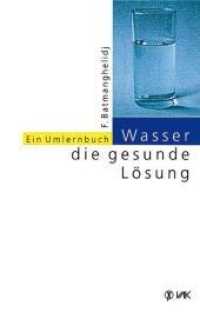- ホーム
- > 洋書
- > 英文書
- > Gardening & Plants
Full Description
Create a crystal-clear, algae-free pond without pumps, filters, or chemicals using natural ecosystem principles. Complete guide to building self-sustaining water features that support wildlife, require minimal maintenance, and stay beautiful year-round through biological balance.
Why Natural Ponds Outperform Artificial Systems:
Conventional ponds require constant mechanical intervention and chemical treatments. Natural ponds use beneficial bacteria, aquatic plants, and ecological balance to maintain themselves with minimal human intervention.
What You'll Create:
Balanced ecosystem design that prevents algae naturally through plant and bacteria management
Wildlife habitat features that attract beneficial birds, frogs, and beneficial insects
Seasonal maintenance schedules requiring just 2-4 hours annually rather than weekly upkeep
Problem prevention through understanding natural pond ecology and water chemistry
Cost-effective construction using natural materials and simple techniques
Long-term Results:
Natural pond owners report 90% less maintenance than artificial ponds, zero ongoing chemical costs, and increased property values of $5,000-15,000 for professionally designed features.
Build a beautiful pond that maintains itself. Perfect for homeowners wanting water features without ongoing maintenance headaches.
Contents
Introduction
1. Understanding a Balanced Ecosystem
Oxygen Cycle
Nutrients
pH
Algae
Animals
Trees and Shrubs
Plants
Microbes
Maintaining Balance in the Ecosystem
2. Environmental Benefits
Pond Ecosystem
Breeding Site for Amphibians
Dragonflies and Mosquitoes
Birds and Mammals
Water Conservation
Environmental Awareness
Less Lawn
Permaculture Food Sources
3. Natural Looking Designs
Native Ponds
Man-made Ponds
How Natural Can You Get?
The Borrowed View
Enjoy the Pond
Stones, Stones, and More Stones
Plants Are Key
Your Final Design
4. Planning and Design
Location
Legal Issues
Access to Electrical Power
Size
Depth
Water Source
Bogs and Rain Gardens
Trees
Pond Liners
Human Access
Rocks
Shape of the Pond and Planting Shelves
Plants
Excavated Soil
5. Building
Site Evaluation
Soil Type
Installing a Preformed Pond
Flexible Pond Liners
Digging the Hole for a Flexible Liner
Preparing the Hole
Installing the Pond Liner
Footings for a Dock or Bridge
Adding Water
Protecting Planting Shelves
Stones for the Planting Shelf
Leveling the Pond Edge
Adding the Spillway
Allowing for Inflow
Edging the Pond
Adding the Finishing Touches
6. Fish
Fish Care
Hobby Fish
Game Fish
7. Plants
Planting
Fertilizing
Starting Small
Too Many Plants
Plant Pests and Diseases
Undesirable Pond Plants
Selection of Water Plants
Workhorse Water Plants
8. Maintenance and Troubleshooting
Don't Do These Things
Adding Water
Removing Organics
Winter Care
Pond Leaks
9. Large-scale Ponds
Special Pond Types
Regulations and Permits
Water Sources
Liner Options
General Construction Considerations
Aerators and Fountains
Constructing Dams
Designing the Inflow
Designing the Outflow
Plants
Eutrophication
10. Pools, Bogs, and Rain Gardens
Natural Swimming Pools
Bogs
Rain Gardens
References
Index
About the Author
A Note About the Publisher








